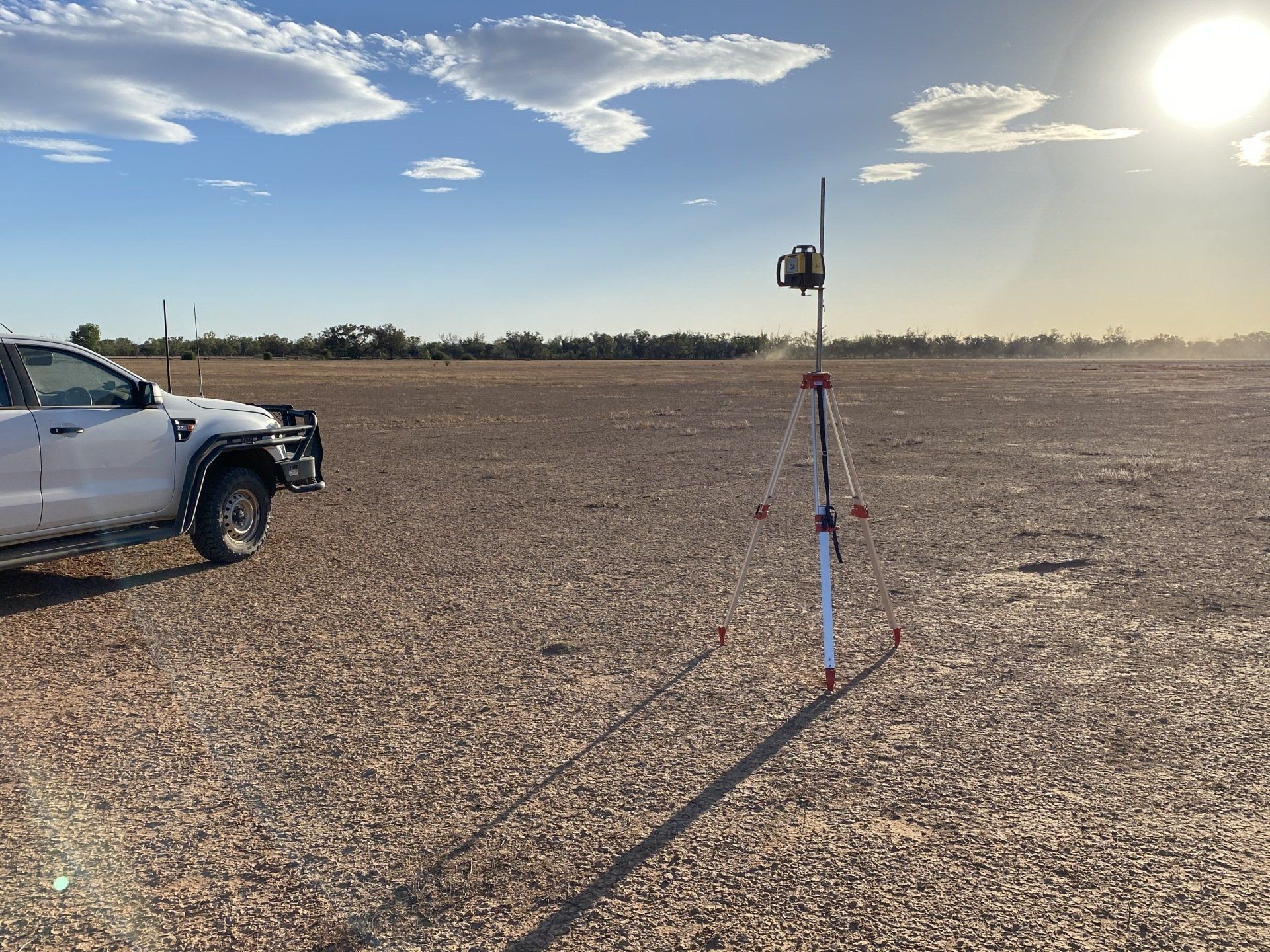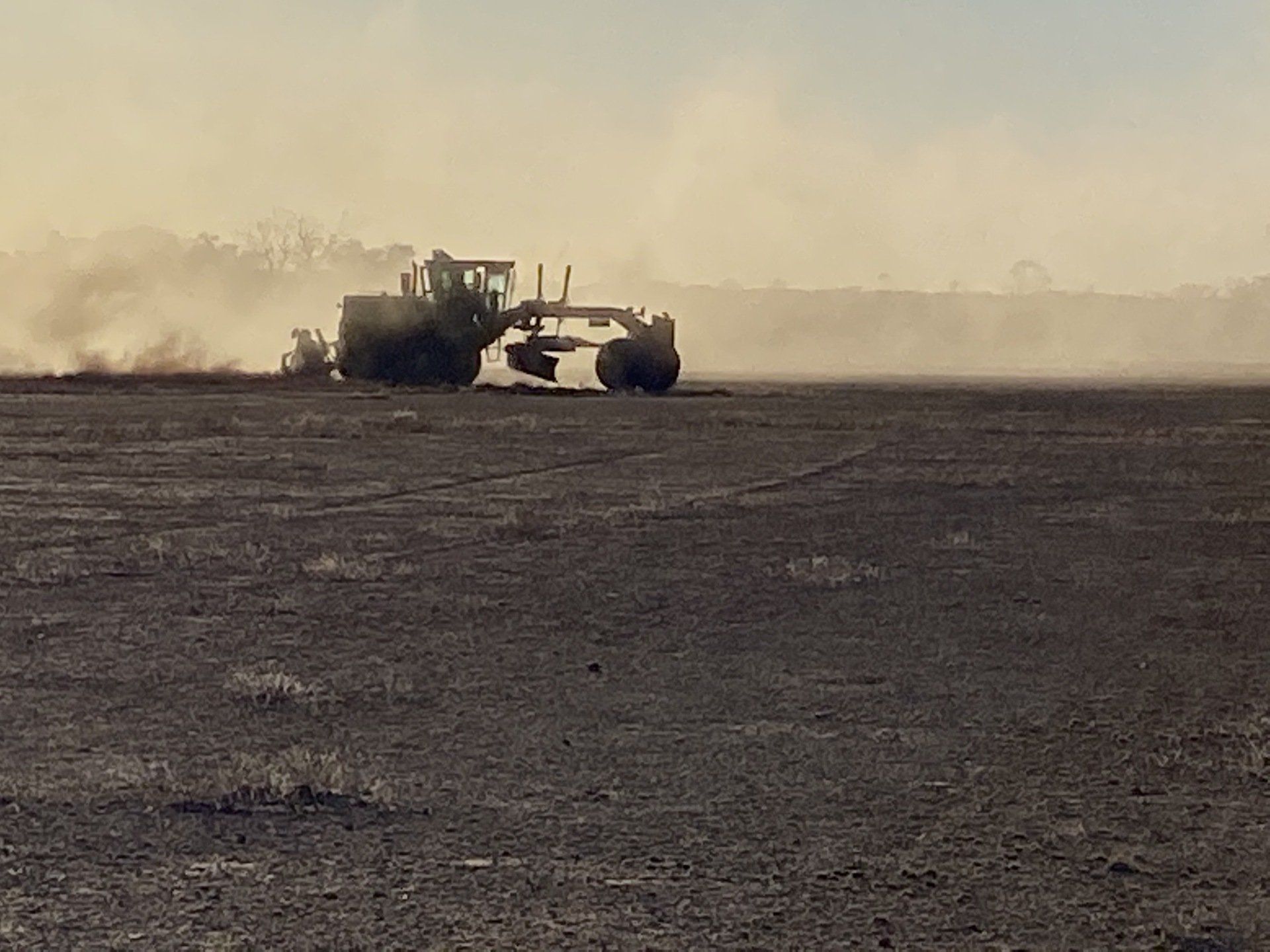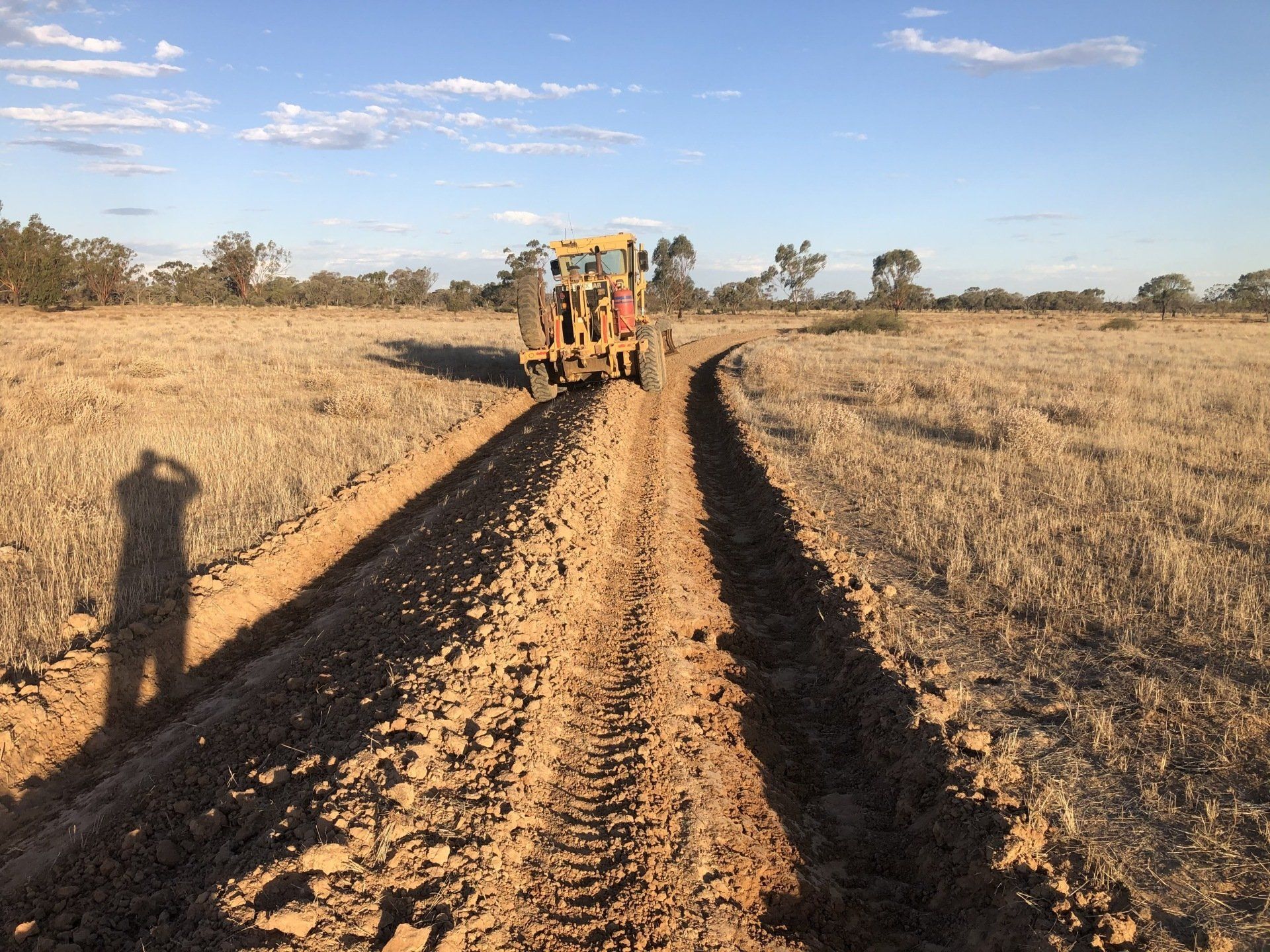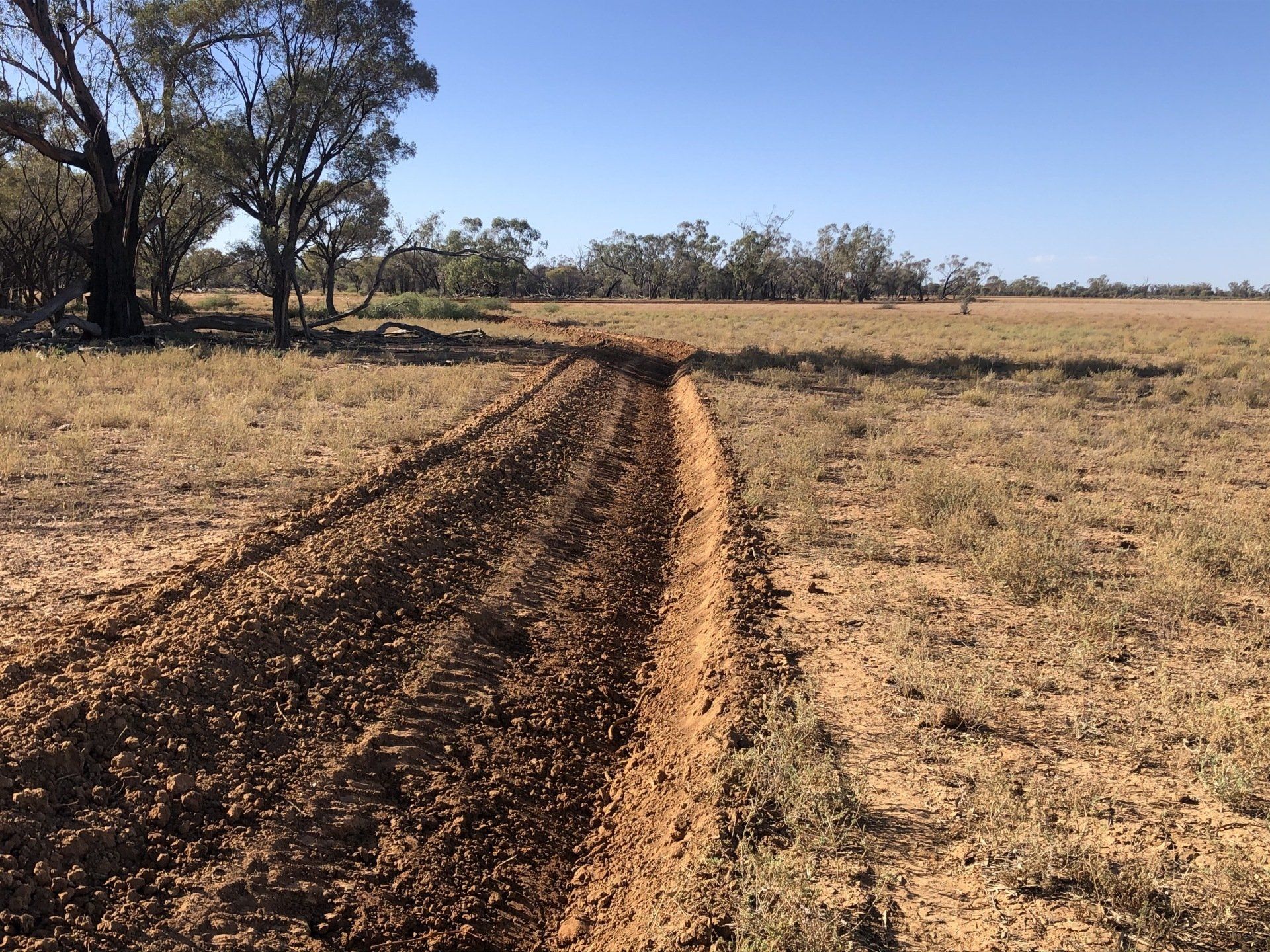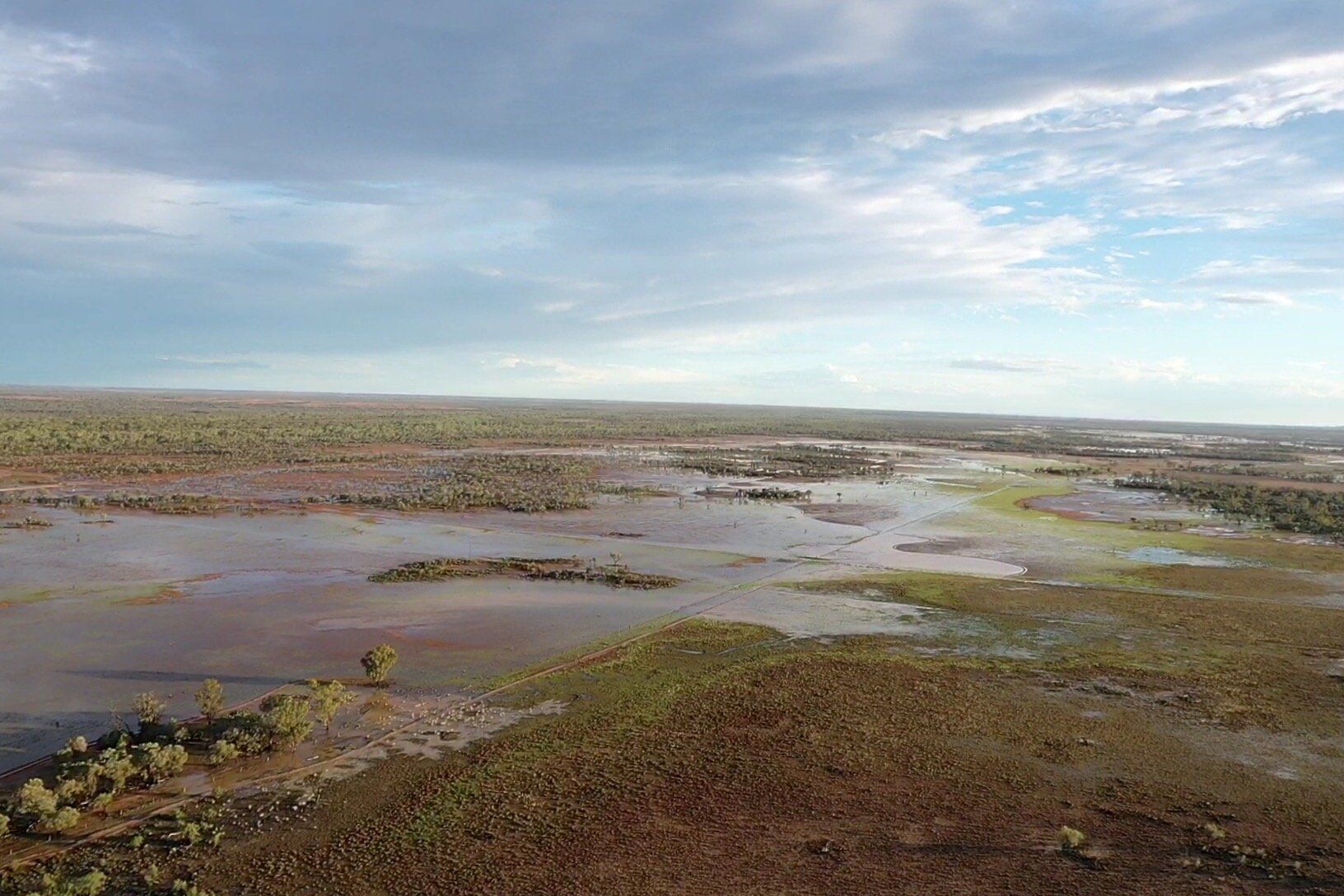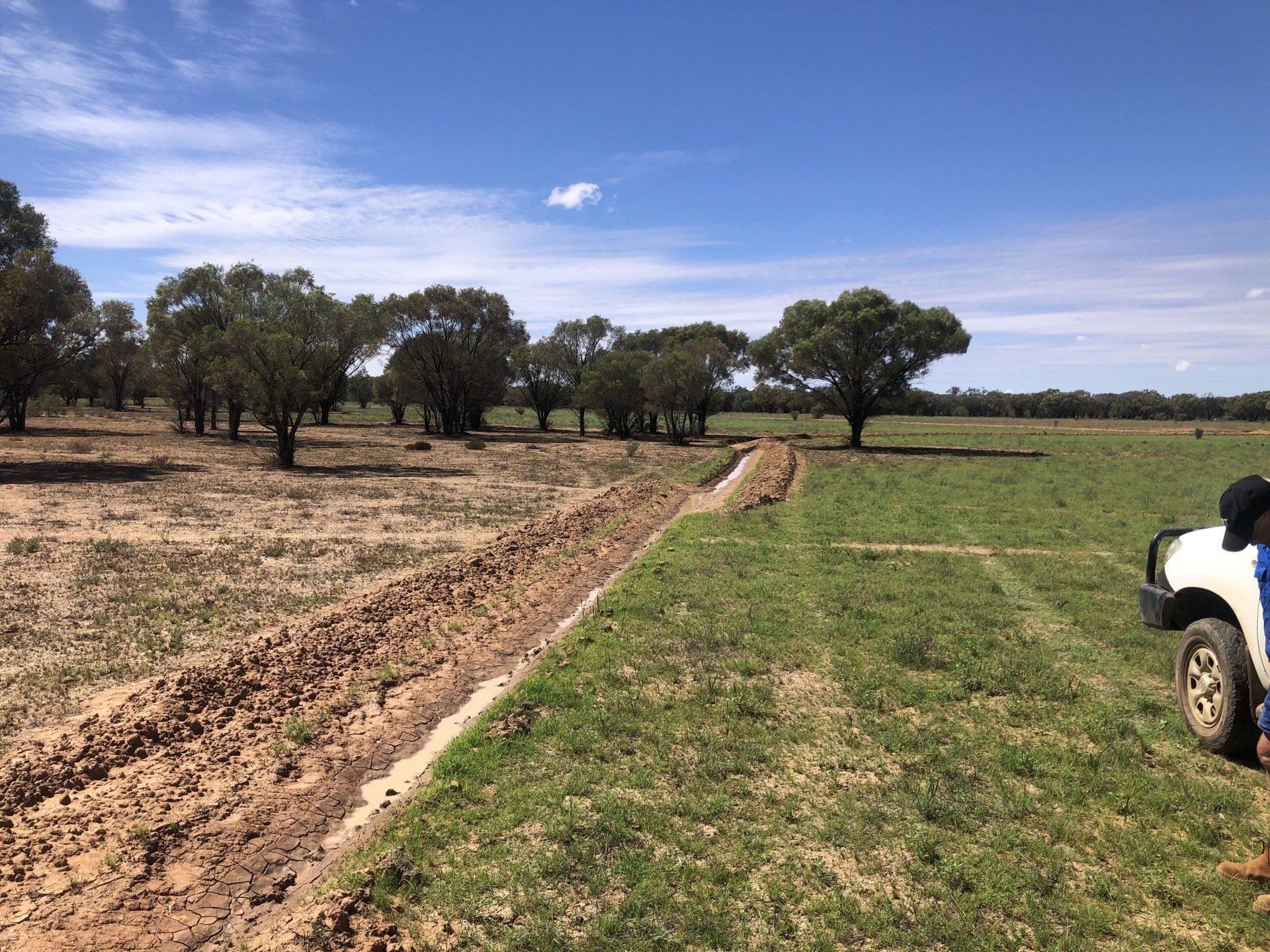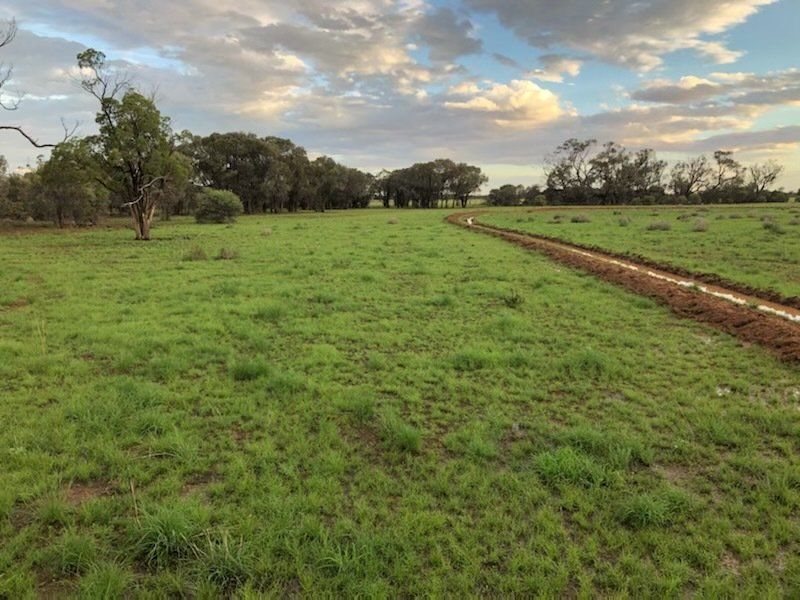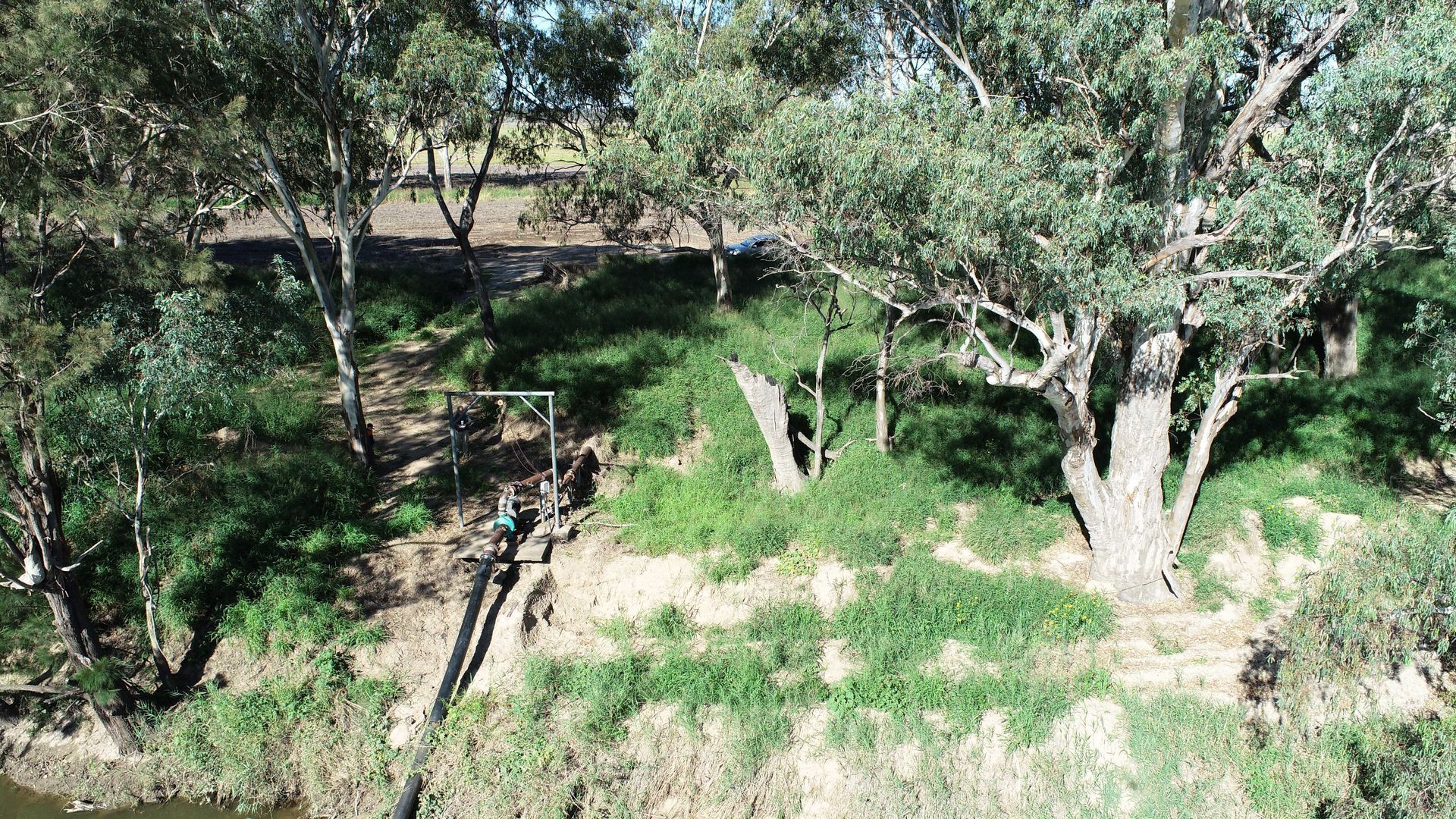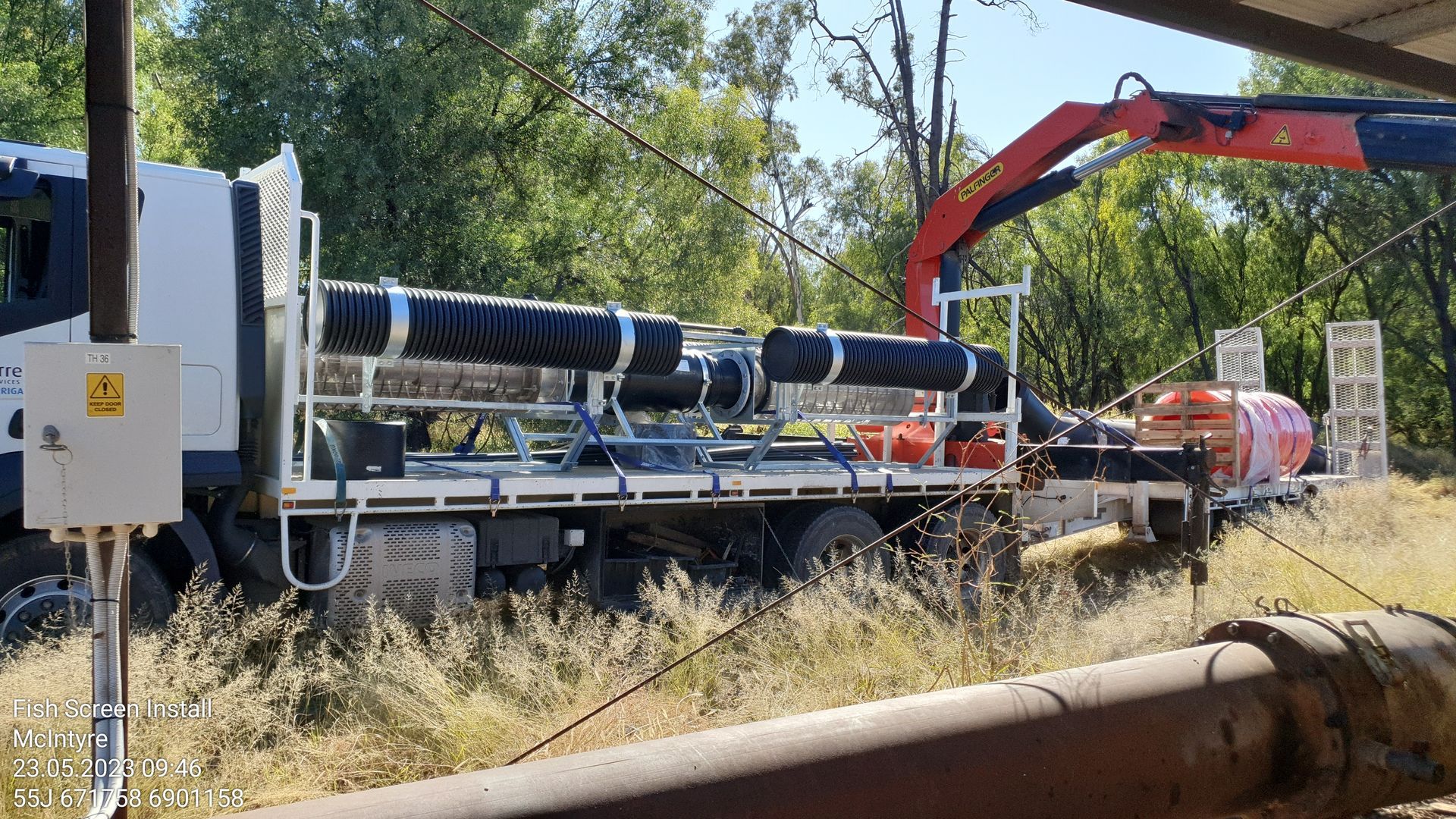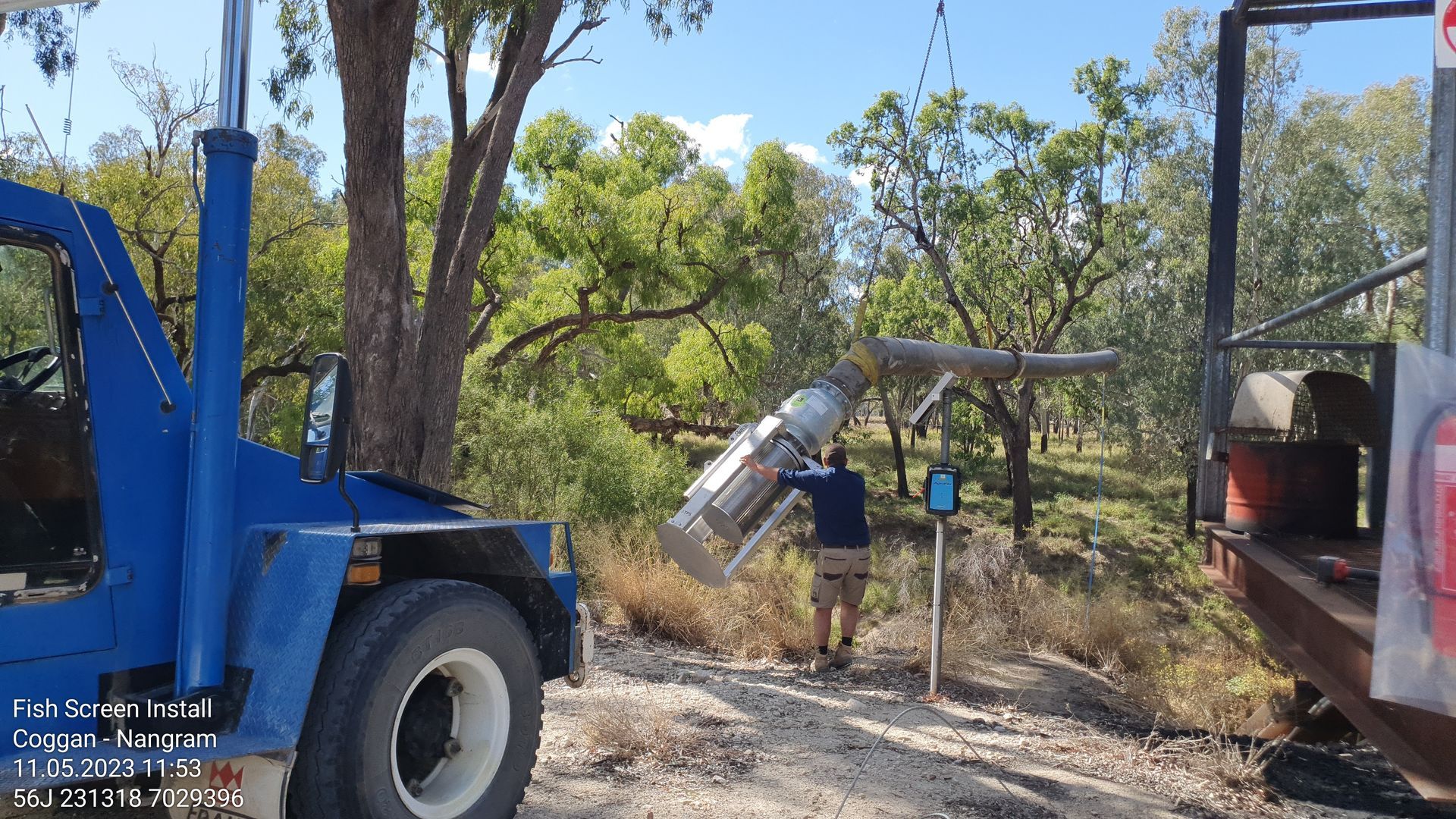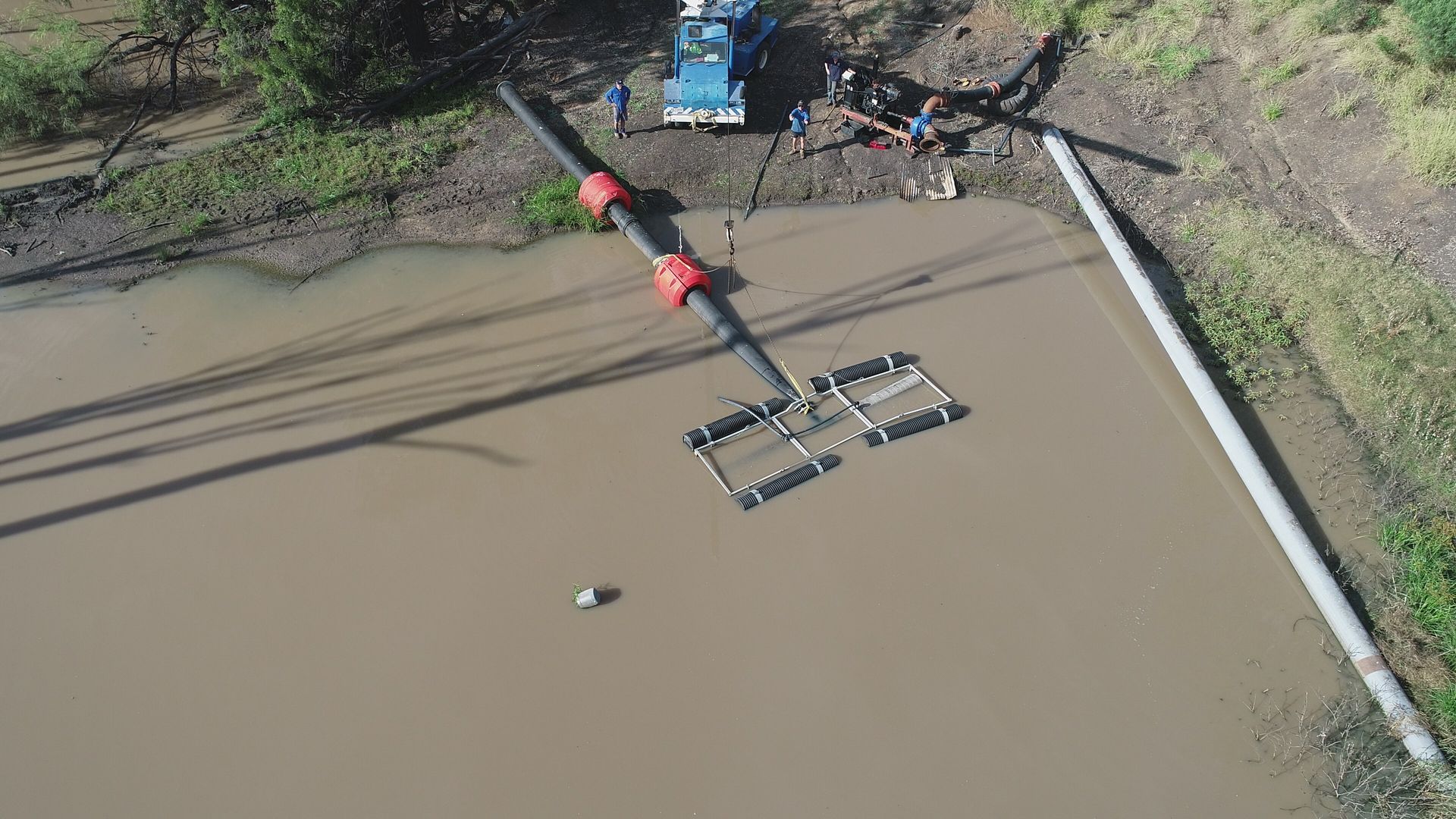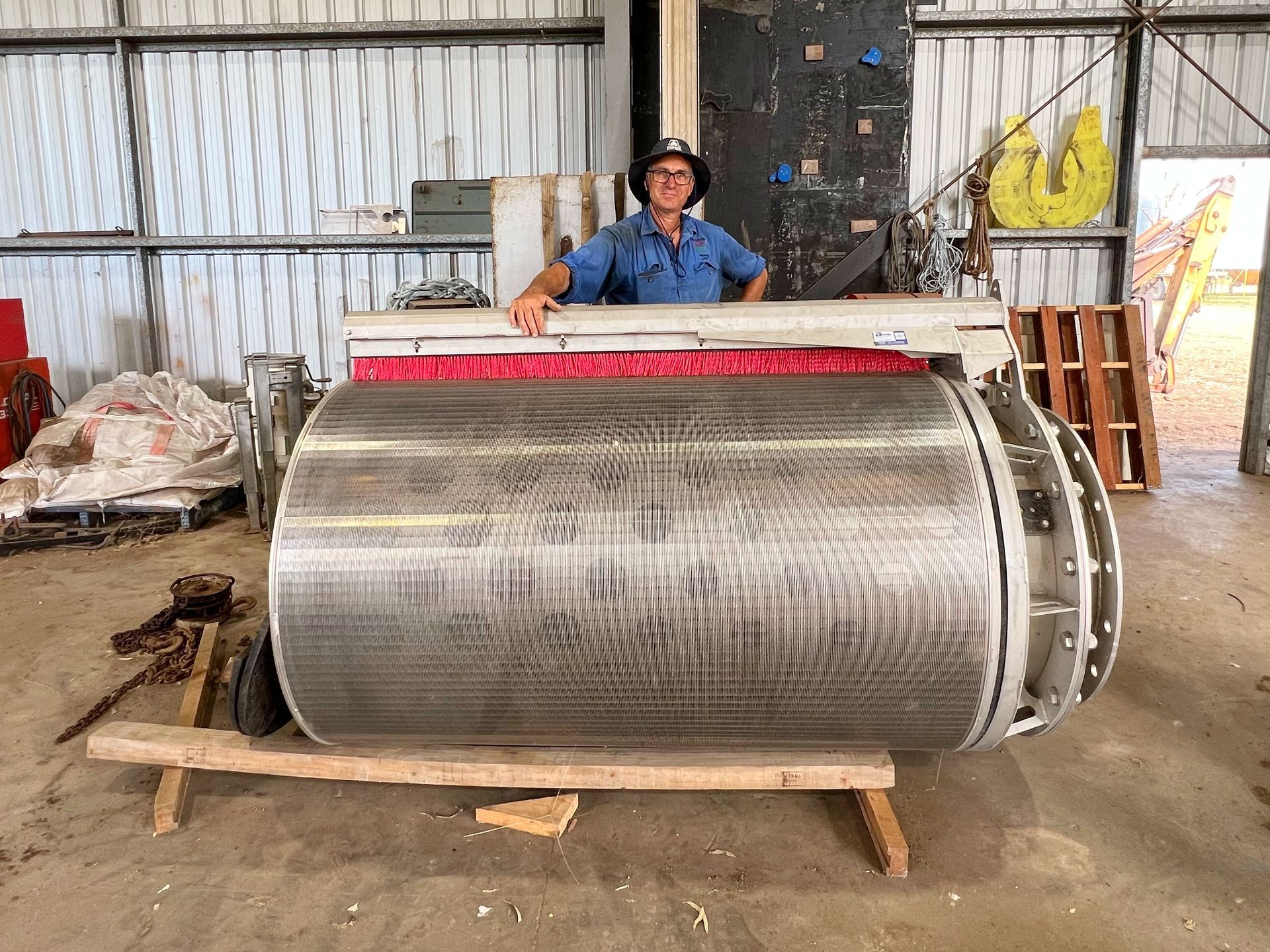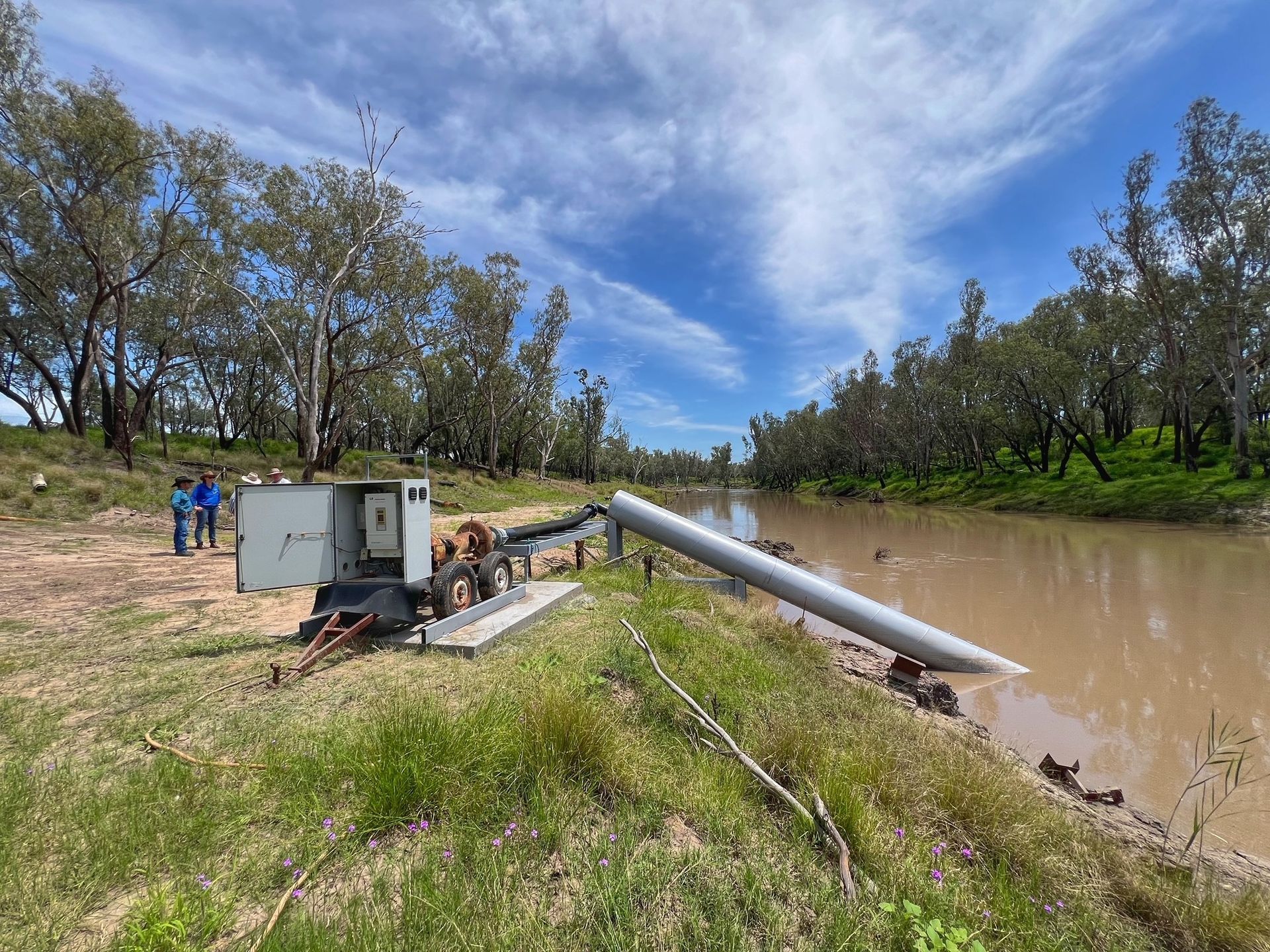Low profile contour banks - game changer for Qld grazier
Just seven months after purchasing a 56,000-acre grazing property north of Quilpie, Dan & Louise Hoch together with brother-in-law Alan Truss have quadrupled the volume of feed on sections of their property despite under average rainfall.
Mr Hoch credits the success on 'Maybe' to the installation of low profile contour banks or spreader banks on clay pan country where water was causing erosion and running off with very minimal infiltration.
He says they found out about this new concept of spreading and slowing down the water during a field day hosted by Southern Queensland Landscapes.
"About six months before we bought 'Maybe' we had attended a field day at 'The Lake' near Quilpie, where soil conservation expert Ray Thompson gave a talk about spreader bank," Mr Hoch said.
"And when we saw the clay pan country on 'Maybe' we thought it would be the perfect opportunity to trial the concept and see if we could harness the power of the flood plains to re-establish native grasslands and increase feed volumes," he said.
Roughly 20km of low profile contour or spreader banks were installed on 'Maybe' over a two day period during December 2020.
"A spreader bank is built by a grader and surveyed to a perfect level not to stop but to spread water allowing the water to soak into the ground and grass to grow," Mr Hoch said.
"About two weeks after installing these contour banks we got about 2 inches of rain; and within a month of the work we had feed. I was just so surprised at how quickly the grass came up," he said.
"The result means a huge amount to our enterprise in the areas that we have installed the spreader banks and we would have easily increased production or volume of feed in these areas by 3 or 4 times."
"It means the grass lasts longer and instead of having to move stock away we can keep them in this area for longer."
At an approximate cost of $4 an acre, which includes dry-hire of a grader, Mr Hoch said it's not too expensive for the production value the banks create and that he plans on doing a lot more restoration banks on his property in the near future.
"I highly recommend trying the spreader banks to anyone who wants to give it a go and on problem areas of their property and suggest they do a trial and see how it goes; but I am sure they will like the concept and get the results they want.
"The introduction of the spreader banks has been a game changer for us and it will turn low production country in high production country long term."
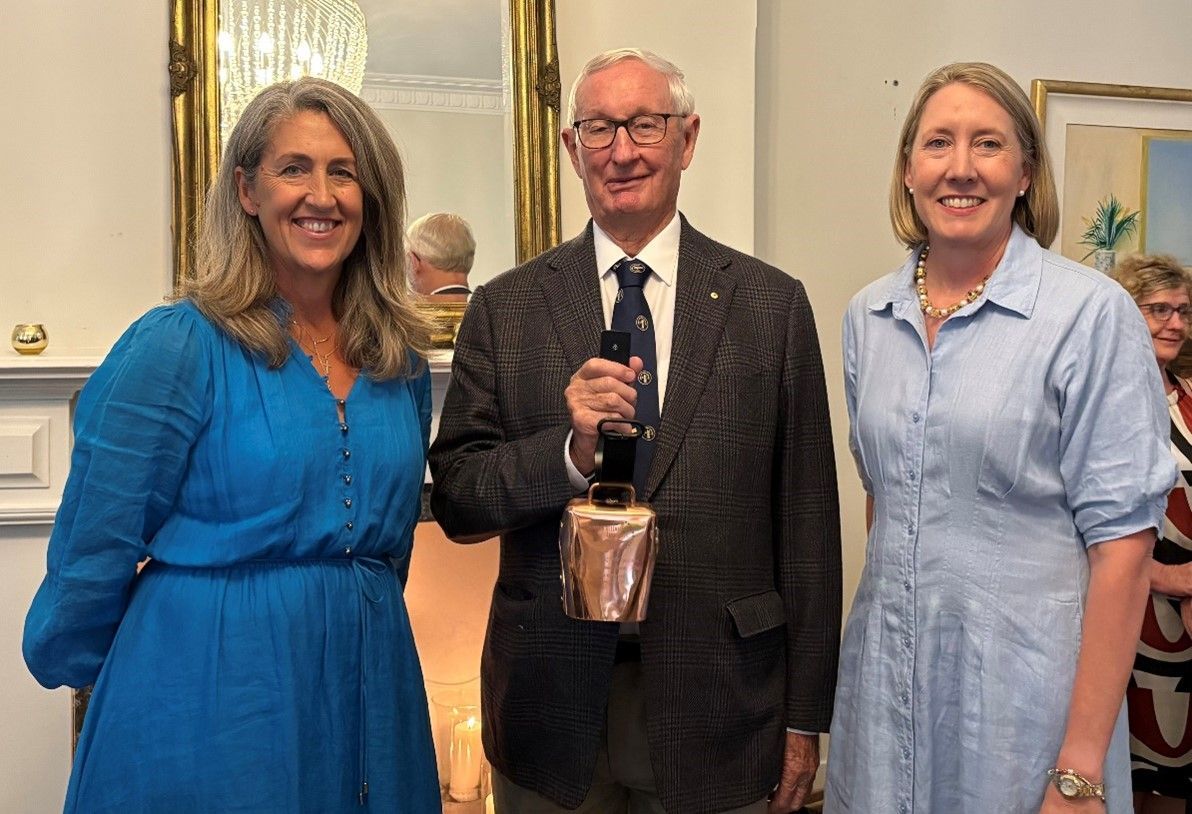
Southern Queensland Landscapes is seeking an experienced and influential Board Chair to lead a multi-skilled Board in managing natural resources across Southern Queensland. This is a 3-year remunerated role based in Toowoomba, QLD, with the flexibility to manage from anywhere in Southern QLD. The ideal candidate will bring: • Substantial experience leading diverse Boards • Strong relationship-building and leadership skills • Expertise in environmental and agricultural matters This role is an opportunity to shape the future of natural resource management, working closely with land managers, community leaders, and industry professionals. Are you ready to make an enduring impact? For more details and to apply, visit www.windsor-group.com.au/job/board-chair-natural-resources-peak-body or contact Mike Conroy at apply@windsor-group.com.au.
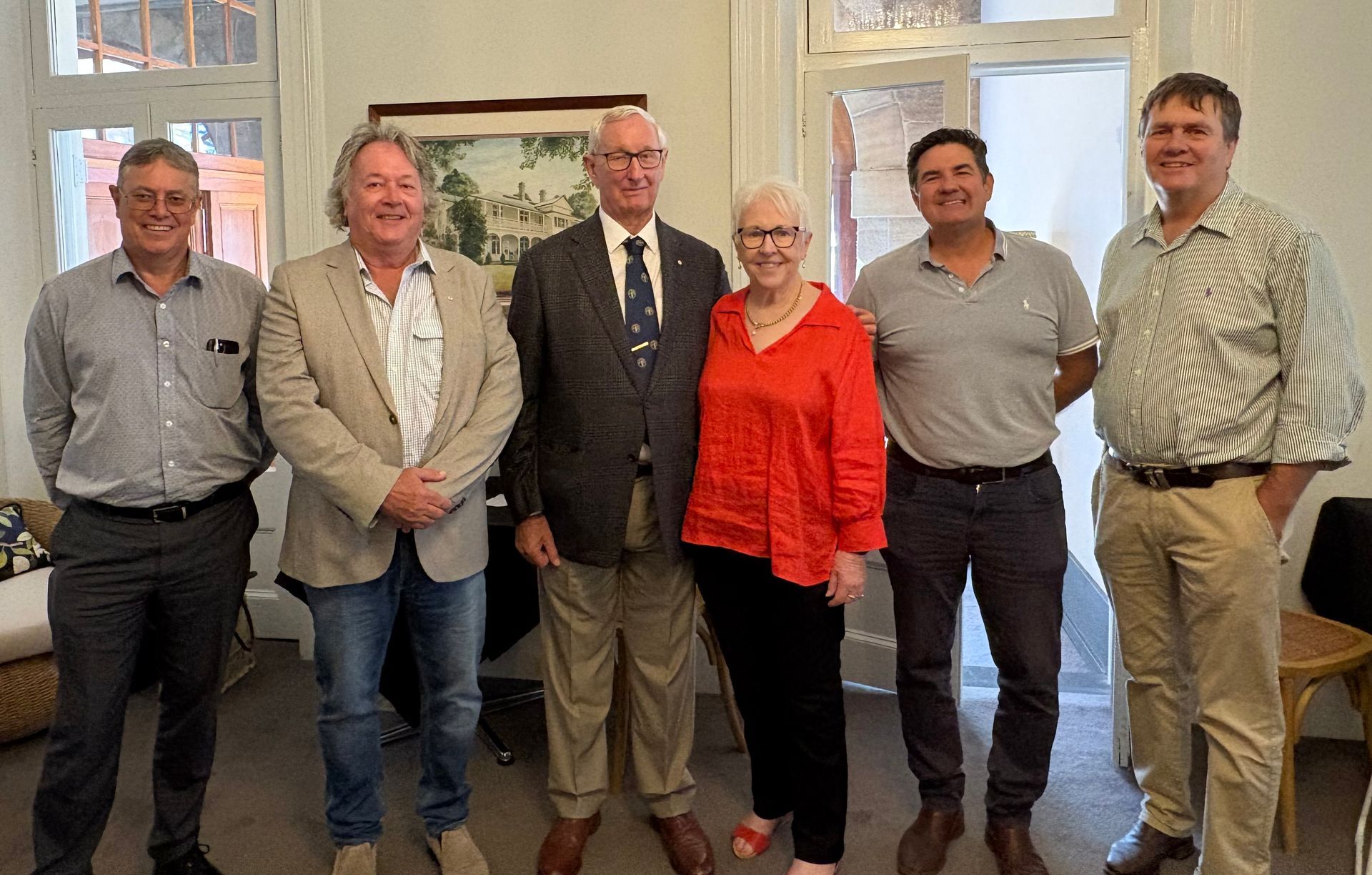
This week marked the final Board meeting for retiring Southern Queensland Landscape Chair, The Hon Bruce Scott AM. The Southern Queensland Landscapes Board hosted a function at Gip’s restaurant in Toowoomba, joined by past Directors, industry stakeholders and the Southern Queensland Landscapes Management team, where Bruce was warmly acknowledged and thanked. Bruce offered special thanks to his dear wife Joan for her support during his period of service to Southern Queensland Landscapes, in particular the warm country hospitality she has offered to many visitors to Roma. Bruce also recognised and thanked Southern Queensland Landscapes Company Secretary Pam Murphy, who has supported Bruce in his service to Southern Queensland Landscapes since the organisation’s inception.
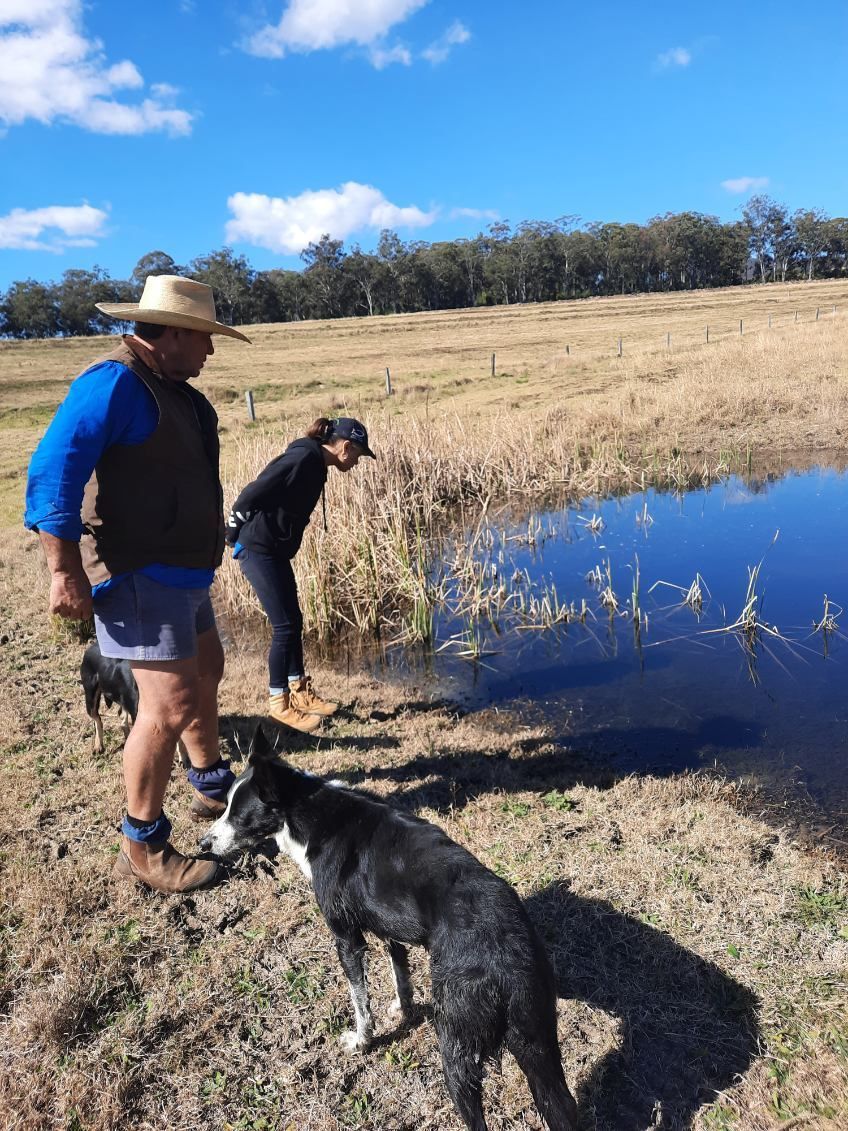
The Condamine Headwaters, a critical ecosystem in Southern Queensland, has long faced threats from sedimentation, habitat degradation, and thermal regime changes. The Blackfish Project, dedicated to reversing these impacts, unites scientists, landowners, and the community in a shared mission to restore and protect this vital environment. At its core lies the river blackfish, a sensitive indicator of the overall ecosystem health. Central to the project's success is the unwavering commitment of landowners like Paul Graham. Inspired by the project's vision, Paul reached out to SQ Landscapes seeking support for a solar pump and tank to divert his cattle away from waterways on his property. Paul's deep-rooted love for his land, captured in his humorous quip "I love my land more than I love my wife," is a testament to the powerful connection between people and place that drives conservation efforts.
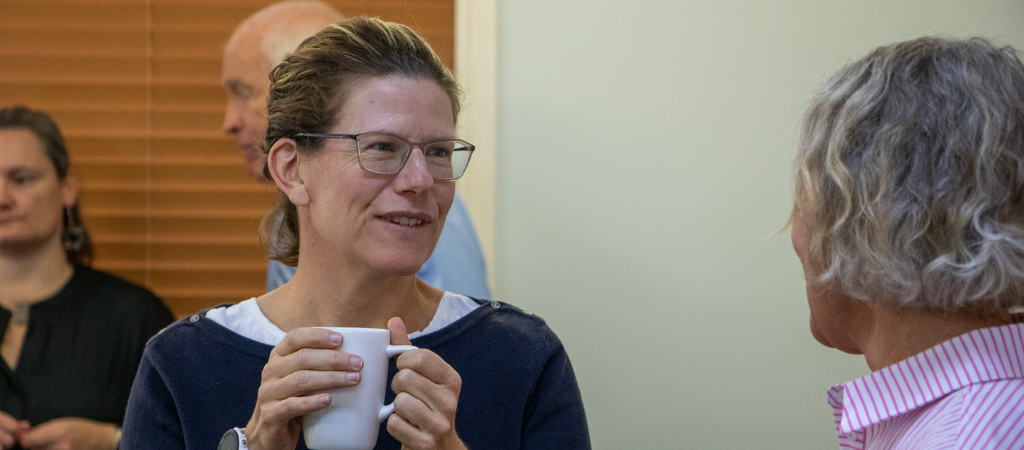
The Board of Southern Queensland Landscapes recently met in Toowoomba. In addition to the Board meeting, Board and Executive worked through updating SQ Landscapes’ strategy. Company Secretary Pam Murphy highlighted the importance of the latest Board meeting and what it means for the company’s future. “The updated strategy will help SQ Landscapes deliver sustainable natural resource management (NRM) outcomes that improve the lives of people in regional communities now and for the future,” Pam Murphy said. “We’re excited to continue delivering value for our region and build Flourishing Landscapes and Healthy Communities across Southern Queensland under the guidance of the Board,” Mrs Murphy said.

